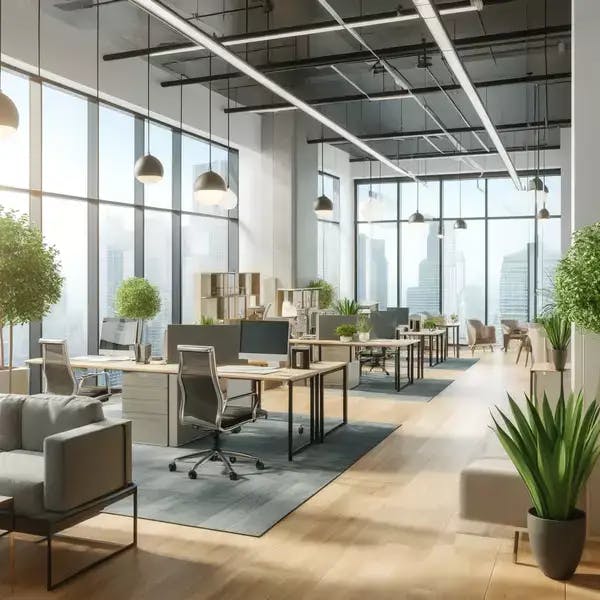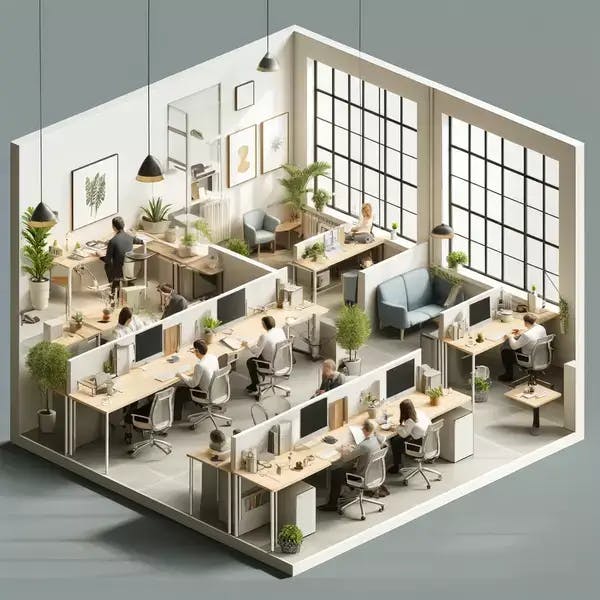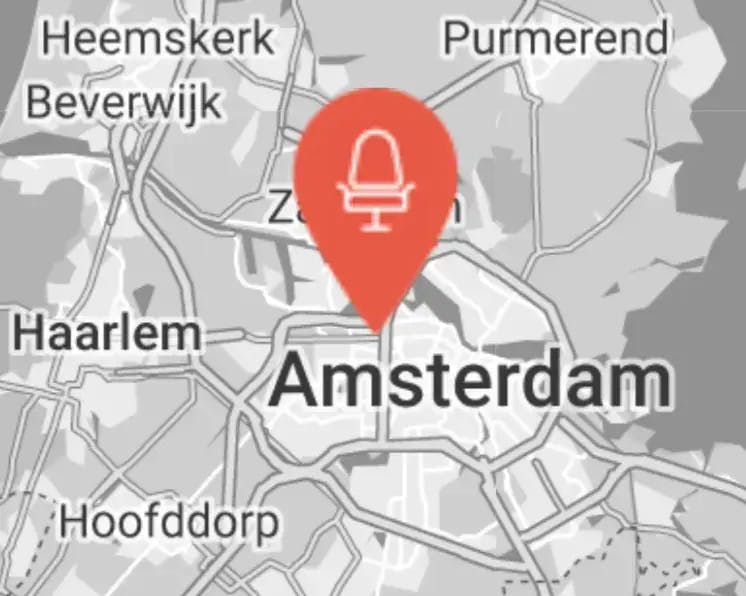Maximizing Office Efficiency: The Square Meter Revolution
In today's office environments, optimizing every square meter is crucial for maximizing efficiency and fostering a productive workspace. This guide offers insights into making the most of your office layout, ensuring every area is utilized to its full potential.
Optimization Strategies
Effective office space optimization starts with a clear understanding of your team's needs and work patterns. From there, deploying smart storage solutions and clutter-free desk policies can significantly enhance the usability of every square meter.

A well-optimized office goes beyond mere aesthetics; it's a productivity powerhouse where every square meter counts.
Smart Layouts: Beyond Open Spaces
The integration of technology in office design has transformed the way we think about space efficiency. Advanced systems for lighting, climate control, and space management enable a more personalized work environment, catering to the unique needs of each employee. Moreover, digital tools and platforms facilitate seamless communication and collaboration, regardless of physical location. By prioritizing these elements, businesses can create office spaces that are not only optimized for square meter usage but are also hubs of innovation and productivity, ready to meet the challenges of the future.
Innovative Use of Space
Innovating office space utilization goes beyond mere physical arrangements; it's about creating an ecosystem that supports the varied facets of modern work. This involves designing spaces that adapt to the changing needs of businesses and their workforce, encouraging mobility, flexibility, and collaboration. From ergonomic furniture that promotes well-being to communal areas that facilitate spontaneous interactions, the goal is to make every square meter of the office conducive to productivity and creativity. Incorporating green spaces and ensuring ample natural light can further enhance the work environment, making it more inviting and stimulating. As we embrace hybrid work models, the office space must evolve to support both in-person and remote work seamlessly, integrating technology that connects the workforce in meaningful ways. Through thoughtful design and strategic planning, it's possible to transform traditional office spaces into vibrant, dynamic workplaces that inspire innovation and efficiency.
These revised sections are designed to more closely align with the character count guidelines provided. Again, I apologize for the oversight and appreciate your understanding as we aim to meet your requirements accurately. If there are further adjustments or additional sections to review, please let me know.
Maximizing Collaboration
Creating spaces that enhance collaboration in offices requires a blend of design, technology, and social engineering. Zones designed for teamwork, equipped with the latest tech, promote seamless interaction and innovation. Incorporating flexible meeting areas, breakout zones, and comfortable communal spaces encourages spontaneous discussions and brainstorming sessions. Effective collaboration setups take into account noise management, privacy needs, and digital connectivity, ensuring every square meter supports not just individual work, but the collective success of the team. Adopting these strategies leads to a workspace that not only maximizes square meters but also amplifies productivity and teamwork.
- Table of contents
- Recent blogsview all
- 5 Essential Tips for Choosing ...

- How to Choose Office Space for...

- Guide to Renting a Workspace i...

- Our location
